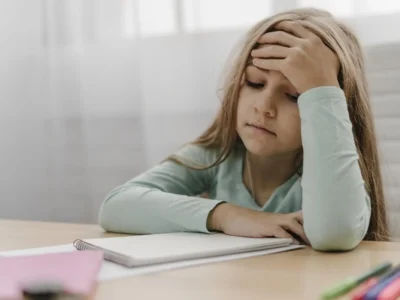In this post, clinical psychologist and neuropsychologist Covadonga García San Nicolás Cantero explains the importance of phonological awareness.
Phonological awareness (PA) is the ability that allows us to be aware of the structure of language, that is, of how sounds are individually organized in the words we pronounce, not their meaning. It is a very important skill in literacy development.
Some authors define phonological awareness as a metacognitive skill on the one hand, since it involves conscious reflection on spoken language, and metalinguistic on the other, as it involves different dimensions of speech sound. Phonological awareness is a capacity that is learned through children’s experiences and interactions during their development.
Why is phonological awareness important?
Phonological awareness is fundamental in the literacy process, since thanks to it we can decode and break words down into phonemes, allowing us to manipulate sounds and facilitating the conscious understanding of the relationship between sounds and letters. Thus, good phonological awareness will promote the learning of skills such as reading and writing.
Having good phonological skills is also beneficial when reading unknown words for the first time and for morphosyntax, allowing the functions and forms of words to be studied more appropriately.
Furthermore, both the development of phonological awareness and the literacy process are fundamental for people’s personal, social, and intellectual development.
What are the components of phonological awareness?
Before talking about the components of PA, it should be noted that it does not involve orthography or a written symbol, that is, to have phonological awareness it is not necessary to yet know the grapheme-phoneme correspondence. This is very important, as the two concepts are often confused.
Phonological awareness has two basic fundamental units:
- Phonemes are the smallest units of speech sounds. Identifying phonemes requires training. For example, the word ‘’pie’’ is composed of three phonemes: /p/ – /i/ – /e/.
- Syllables constitute phonological units in which words are segmented. For example, the word ‘’casa’’ is composed of two syllables: ‘’ca’’- ‘’sa’’.
PA is usually addressed from larger structures to smaller structures. For example, one would start working with sentences, words, and syllables before moving on to phonemes, rather than doing it from smaller to larger (from phonemes to sentences). This is because, in general, broader units always seem easier to us than more reduced ones.
In addition, there is a hierarchical acquisition model of phonological awareness composed of the following levels of awareness:
- Syllable awareness implies being aware of how words are segmented and being able to manipulate them.
- Intrasyllabic awareness allows segmenting syllables into their parts. A syllable is composed of the onset (also known as onset) which refers to the consonant or group of consonants that make up the beginning of the word; and the rime, which would be the letters that follow this onset. The following example better explains these terms: the syllable ‘’le’’. The onset would be ‘’l’’ and the rime would be ‘’e’’.
- Phonemic awareness refers to the ability to segment the smallest units of speech into discrete sounds such as phonemes. That is, it implies being aware that a word is composed of different individual phonemes.
How does phonological awareness develop?
Phonological awareness is learned through the exposure children have to the sounds of the language in their environment, mainly from interactions with adults when talking to them, reading stories to them, telling them tales, rhymes, tongue twisters, music, etc. All of this allows children to become aware of sounds, recognize them, and learn to use them orally.
There is no consensus on at what age or developmental stage children are more capable of developing or learning about phonological awareness. In addition, pre-reading children do not have difficulties recognizing and manipulating syllables, so knowing how to write or read are not prerequisites for learning about phonological awareness.
However, to develop phonological awareness it is necessary to have some important skills:
- First of all, it is crucial to have the ability to listen. This will allow us to perceive sounds and pay attention to them through active listening.
- After this, it is essential to have lexical awareness. This implies being able to identify the words that exist in sentences.
- It is also important to have syllable awareness, already explained in previous points.
- Rhyme awareness plays a fundamental role, as it implies an understanding of how language is structured, word segmentation, and also involves the ability to discriminate between similar sounds and recognize the final sounds of words.
- The next step would be phoneme awareness.

Subscribe
to our
Newsletter
What is taught first?
This is a question that will surely arise as you read this post. What is clear from what we have seen so far is that phonological awareness is fundamental in the literacy process, that is, both for learning to write and for learning to read. Rather than explaining which is taught first, we will explain some of the skills that are necessary for writing and for reading in general.
For example, to be able to write you must carry out a series of steps. First we think about what we want to write. Once we know it, we discriminate the individual sounds of the words in order to later retrieve the spelling or letter associated with the sound we want to reproduce. To produce it, we need motor skills that allow us to make the strokes of the necessary letters.
Therefore, to be able to write a word correctly, in general, we will need to meet the development of some prerequisites:
- Language.
- Phonological awareness.
- Phoneme-grapheme correspondence.
- Motor skills.
However, for reading, the process is different. The first thing we pay attention to is recognizing the letters in front of us. Once we have recognized them, we make the phoneme-grapheme correspondence, producing the phoneme from the letter. After this, the phonemes are integrated, phonetically composing the word. And, finally, I look up the word in the lexicon to understand its meaning.
Examples of symptoms of deficits in phonological awareness
Below, you will find examples of when we can suspect that there are difficulties in phonological awareness:
- When phonological pronunciation errors are made.
- When there are difficulties reading or writing.
- When letters are identified individually but it is not possible to read an entire word.
- When there are difficulties creating rhymes or finding words that rhyme with others.
- When creating new words is quite a challenge.
- When errors are made when segmenting words into syllables.
What exercises help us work on phonological awareness?
To work on phonological awareness, materials in which written words appear, or incomplete written words, etc. are not necessary, since, as we explained earlier, PA does not involve orthography, but rather the structure of spoken language.
Exercises that involve onomatopoeias, tongue twisters, rhyme games, segmenting words into syllables, orally repeating words or sounds heard, etc. would be good ways to stimulate phonological awareness.
Conclusions
Phonological awareness is a linguistic skill that allows us to reflect on the organization of language at the phonological level in order to understand and manipulate it. It is fundamental for learning to write and read. Phonological awareness can be stimulated through exercises that involve phonological activities, without the need to use written or read letters.
Bibliography
- Andrade-Santamaría, J. V., Andrade-Solís, P. E., y Zumba-Faicán, D. P. (2023). Neurobiological development of phonological awareness and its relationship with literacy. Revista Científica y Arbitrada de Ciencias Sociales y Trabajo Social: Tejedora, 6(12), 87-98.
- Chaseling, M. (2022). Reading is not just Something, It is Everything: Using Collaborative Inquiry Twinned with Generative Dialogue for School Improvement in Elementary Classrooms. The Canadian Journal of Action Research, 22(2), 46–71.
- Gutiérrez Fresneda, R. y Díez Mediavilla, A. (2018). Phonological awareness and the developmental evolution of writing in early childhood. Educación XX1, 21(1), 395-416, doi: 10.5944/educXX1.13256
- Mateo, M. [Cuentos para Crecer]. (June 10, 2022). Phonological Awareness: Questions and Answers. [Video file]. https://www.youtube.com/watch?v=_74Ai-VaQXQ&ab_channel=CuentosparaCrecer
- Rivadeneir, E. M., Reyes, C. C., y León, B. B. (2024). Early language development: significant connections between phonological awareness, vocabulary, and pronunciation. Conrado, 20(96), 139-147.
- Valle-Zevallos, M.-J., Mendez-Vergaray, J., y Flores, E. (2024). Phonological awareness and its relationship with reading: A systematic review. Horizontes. Revista De Investigación En Ciencias De La Educación, 8(33), 1004–1021. https://doi.org/10.33996/revistahorizontes.v8i33.779
If you liked this article about phonological awareness, you will likely be interested in these NeuronUP articles:
“This article has been translated. Link to the original article in Spanish:”
Conciencia fonológica








Leave a Reply